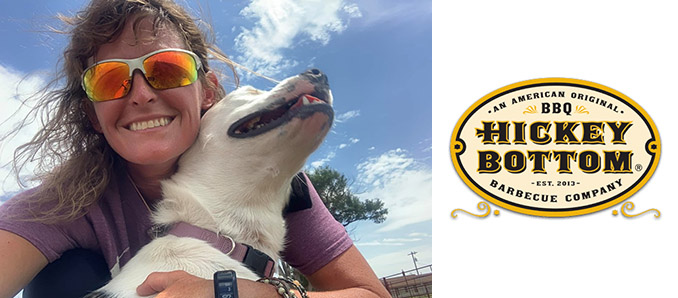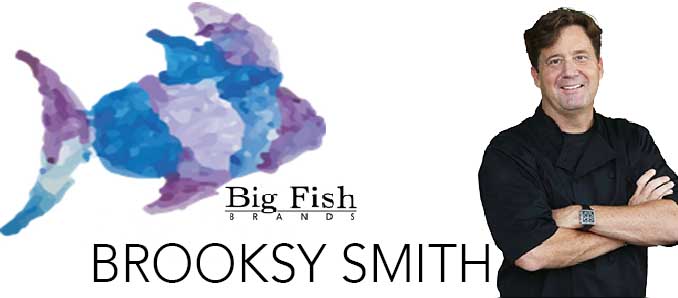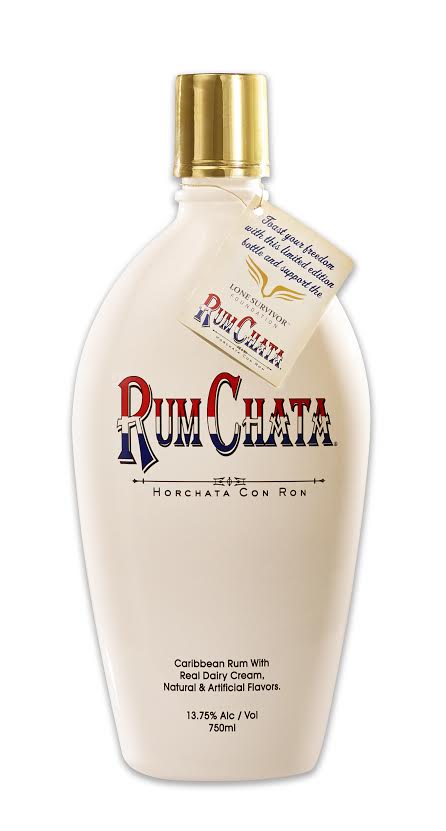Do you love whisky?
Go Ahead. Make it a Double – Food & Beverage Magazine
Or maybe you’ve tried it and absolutely hated it.
Perhaps you tried it and didn’t love it, but you knew there was “something there”.
Many of us fall into the latter category. We love the smell of it. We hastily drank a few sips in college, only to find out that it fell flat and left us with a longing to try something else.
Make it a Double: From Wretched to Wondrous: Tales of One Woman’s Lifelong Discovery of Whisky by Shelley Sackier is the bible for whisky lovers and wannabes alike. Showcasing her amazing personality and extreme knowledge on the subject, Make it a Double should definitely be on your reading list.
I recently had the opportunity to interview this Whisky Goddess. Her insight and personality will absolutely have you hooked. Keep reading to learn all about this popular elixir and her learning curve to finding whisky love.
Your new book is tremendously exciting and groundbreaking. Can you tell us a bit about the inspiration for this labor of love?
It feels like I have never not been writing this book. I have worked on this compendium of stories for two decades because I wanted to track this life-defining transformation I knew I was going through.
My first handshake with brown spirits was a most unforgiving one, and I’d experienced a real visceral, noxious to my body reaction to it, but, as I explain in the beginning of the book, because of one person’s enthusiasm and patient instruction, and because my next experiences were paired with folklore, history, geography, keen craftsmanship, food, and science—everything that embodied the making of this spirit—I saw in real time how influential and critical they all were to rewiring my brain to welcome something foreign—something I couldn’t possibly appreciate without a foundation with which to understand it.
It’s a little like putting your Joe average 5th grader into a calculus class. There’s so much one needs to be exposed to first before all those hieroglyphics become beautiful.
This book allows me—in short order—to expose people to a few crucial but fascinating things to make their initial eye contact (or rather, lip contact) with brown spirits to be a bit less befuddling and a lot more enticing.
From my understanding, initially, you disliked whisky. Can you tell us a bit about that first experience?
The first time I laid eyes on a dram of scotch—or any brown spirit for that matter—I was on my inaugural visit to Scotland. I was a fresh twenty-two-year-old who possessed an insufferably cocky confidence about myself and the world I was traveling. My soon-to-be husband took charge of my initiation into Scotland, and after hunting through castles, traversing around gleaming lochs, scrabbling across architectural ruins, and scarfing down my body weight in meat pies and milk stouts, he felt it was time I do some barrel hugging—although he’s an Englishman and would never be caught dead doing such an American act.
We visited a Highland distillery on the west coast of Scotland, a beautiful place called Oban. Following the tour, after seeing the malting floors, the massive mash tuns and washbacks holding those fermenting grains, and the squat and bulbous shiny copper pots that distilled that cereal-scented liquid into the elixir they advertised, I was handed a tulip-shaped glass and told how lucky I was to be experiencing one of the best whiskies in the world.
I took a sip. I did not feel lucky. I felt duped—betrayed by the man who stood next to me and stared glassy-eyed into his own drink, and I felt hoodwinked by a company that surely pitied all the touring visitors gathered, deeming they would make great townspeople for the next parade of the emperor’s new clothes.
I—not so quietly—expressed my dislike and asked why anyone could be conned into taking another sip. I was abruptly ushered out.
In the evening, before dinner, the barkeep from our hotel asked if I’d like a dram to keep me warm. My nettled fiancé suggested the barman keep his precious gold as my tongue was woefully uneducated. After hearing what I’d been given, the barman blamed my companion for introducing me to the wrong end of the whisky spectrum and agreed I had been given poison—er, a flavor profile that was unpalatable to the uninitiated. He begged I try again, but with a glass of something he described that sounded much more like a marmalade cosmopolitan than the smokey, spicy, bite of the previous offering.
It was warm and heady, it brought back all the memories of the spellbinding sights and smells and flavors I’d thus far racked up whilst touring around the country. Everything bloomed within that glass, and at that moment I felt a positional shift. Scotland had discovered how to transform a seductive come-hither glance into liquid form. I was hooked.
Tell us a bit about Reservoir Distillery in Virginia. (local ingredients, what makes it special?)
Reservoir Distillery was established in 2008 and was the third distillery outside of Kentucky to make bourbon. Our whiskies focus greatly on answering the question, What does Virginia taste like?, as our wheat, corn, and rye all come from within spitting distance of our doorstep. We love our farmers, we love our grains, we even go so far as to cut down trees grown in Virginia and have them made into barrels by our coopers. We believe in the power of provenance.
There is so much that goes into creating the flavor profile of a spirit. Yes, it’s the patch of earth where our grains and trees are grown, but it’s also the choices made on the production room floor—the decisions a distiller makes in crafting the recipe, the type of machinery used from start to finish, the size of the casks, the type of warehouse the whiskey is maturing in, and the climate within that facility. We focus on things down to the granular level of how temperature, humidity, and barometric pressure factor into our aging operations.
I think the pithy answer to your question about what makes Reservoir special is that every step from grain to glass is one where our fervent fingerprints are all over it. We care that much about whiskey.
What is your role there and how does that experience factor into the book?
The first time I stepped across the threshold into Reservoir’s distillery I was researching another book. I asked to speak with the head distiller, or one of the production room floor operators—I wanted to make sure I had all my “American whiskey” details straight, as my knowledge base was rooted firmly in how the Scots make scotch.
Fortuitously, I ran into Dave Cuttino, Reservoir’s proprietor, and a man who is basically walking whiskey wisdom. Halfway through our conversation, he asked Why are you not working for a distillery?, and before I could spit out, Because I already have a job as an author, he came back with, You’re going to work in my distillery.
Yes, I was a little befuddled as to what an author with minimal “hands-on” experience within the production room floor could contribute, but Dave simply stated that his plan was to squeeze out every last drop of whisky knowledge I possessed and put it to work with a job he would create just for me.
This is only one of the marvelous things about working for Reservoir—the fact that the company’s leadership is talent-driven. It is also now women-powered, so this speaks volumes in my book and literally in my book, as trying to get a foothold in a predominantly male-flooded industry has been tricky at times.
As a woman who spent the last twenty-five years strictly in the company of older, white males as mentors, it gives me no small amount of pleasure to now have that picture flipped where as the Director of Distillery Education, my daily work includes mentoring men, women, the distillery dogs, and even children—because you are never too young to learn, and most of what I teach falls within the academic categories of science and engineering.
If I want to learn more about whisky, what do you recommend?
I could answer cheekily that you should read my book, but truly, there is a bucketful of authors writing engaging and educational pieces about whisky—everything from the nuts-and-bolts science and engineering stages to the biology of training one’s sensory skills, all helping to guide you toward unearthing the endless artistry emanating from your glass. There is a vast library to explore via the written word.
That said, a spotlight should be shown upon the benefits of actually going to a distillery. Take a tour, peruse the production room floor, wander the warehouse, and inhale as many heady fumes as is safe and that still allows you to drive home thereafter. You will likely be given a sample or several, and you’ll likely have a guide who can answer any questions that creep up.
There is great benefit to joining a local whisky club—either in person or online. You can start as a newbie, and I assure you, there will be myriad individuals rubbing their hands together with glee at the opportunity to help direct your educational path via the spirits they’re currently crazed over.
And of course, there is always the option of starting with your local watering hole scanning the shelves behind the bar and asking the publican about their opinions regarding whatever is in stock. Once you’ve outgrown that barstool, visit a true-blue whisky bar. Be amazed. Blow your mind. Bring your pocketbook. Whisky can be expensive. Sometimes visiting an establishment that sells it by the glass is a much better bet than buying the whole bottle—if you’re trying something new. Better yet, go to a friend’s house and ask if you can raid their liquor cabinet. Most people who love whisky love sharing whisky.
Are there tours available at Reservoir that can teach the layman about whisky?
Absolutely.
Our staff is expertly trained, plus they’re all huge enthusiasts themselves. Not only are tours available, but we teach classes on countless whisky subjects as well—The History of Distillation, The History of Bourbon, Nosing and Tasting, Scotch 101, The Art of Blending—we’re big into education.
Your story highly interests me. I tried whisky for the first time in Ireland and hated it. I’ve never given it another chance. What do you recommend?
Forgive Ireland’s botched attempt to acquire a new fan and give it another go—but not with the same whiskey! If it’s been a few years since trying the Emerald Isle’s elixir, then know that the country has gone through a revival. It is bouncing back from decades of shrunken choice and creativity and has emerged vibrant and impassioned. The landscape is now flush with craft distilleries making impressive spirits. But maybe try another country altogether if you’re still gun-shy. Remember that Scotland has this beautiful spectrum of flavor profiles that go from fruity and floral to smoky and peaty with plenty of riches found in between, but there is a growing number of other countries whose whiskies are making headlines. India’s production is rocketing off the charts, Australian distillers are raising eyebrows, plus Germany, Taiwan, and Japan are all driving interest and attention toward their creation of spirits. And of course, one can’t discount what’s available right here upon our own shores. America (not even including the wealth of Canadian whiskies) now proudly hosts over 2000 craft distilleries from coast to coast.
With the vast array of grains being distilled, creating a diverse spectrum of flavors, there is no doubt in my mind we can find a whisky that will appeal to nearly any palate—picky, particular, or polished.
Where can I buy your book? What are your social media handles/websites?
Make It A Double is available wherever books are sold (all the big retailers), online at Reservoirdistillery.com, but my heartfelt suggestion is for people to find their local indie and give it some love. Buy a book from your hometown bookstore to keep its livelihood protected!
You can find me, and a lot more of my drivel, at ShelleySackier.com or on Instagram (@shelleysackier).
Is there anything else you would like to tell our readers?
I will be in Paris at the SIAL trade show talking books and bottles October 15th-19th (the largest Food & Beverage showcase inspiring industry professional across the globe) and would be thrilled to chat with anyone attending. Come say hello, and I’ll pour you a dram!
Staying true to Shelley’s recommendations, I plan to visit a distillery near me soon. There is no better way to learn about something than to actually experience it yourself. When I schedule a tour and tasting, you better believe I will have a copy of Make it a Double in-hand.
Read Also: FVP Gals – Food & Beverage Magazine







